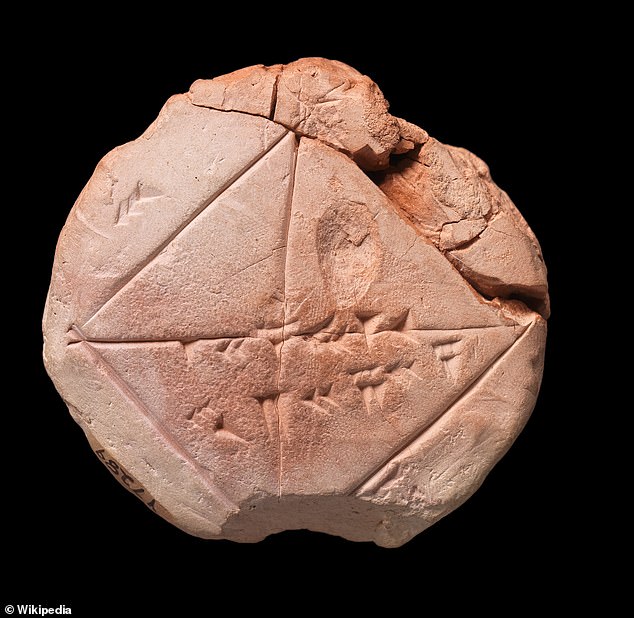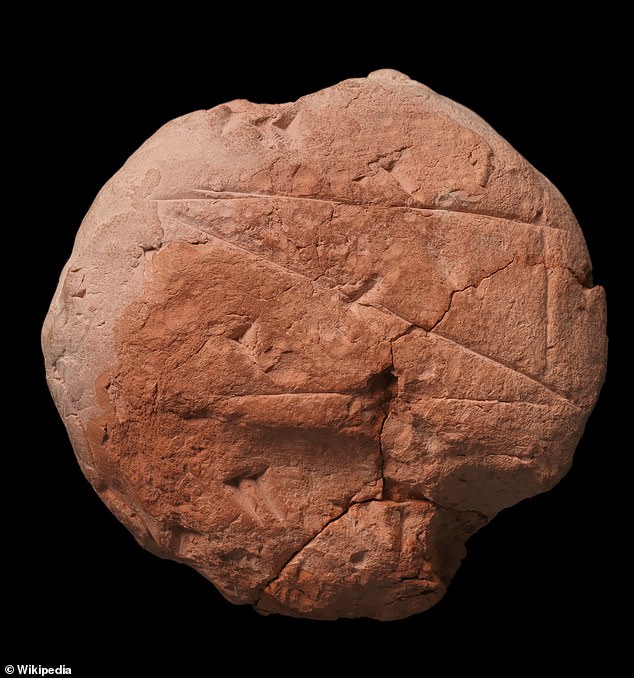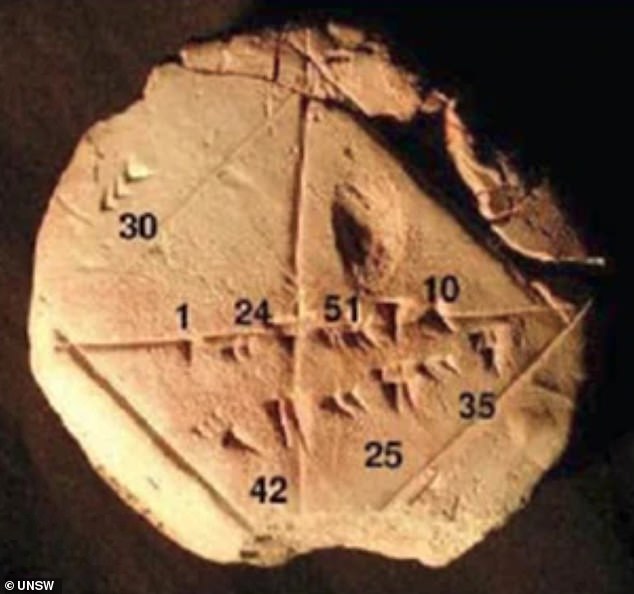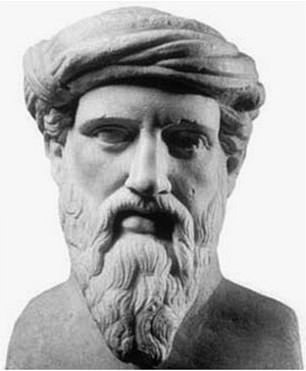Ancient Babylonian tablet suggests Pythagoras did NOT discover the famous theorem – but only popularized it 1,000 years later
>
A recent discovery suggests that the Pythagorean theorem could be the world’s oldest known case of plagiarism.
The ancient Greek philosopher, born in 570 BC, is credited with creating the mathematics that helps in finding the missing side of a right triangle.
But a contemporary mathematician has discovered an ancient Babylonian tablet bearing a concept that predates the birth of Pythagoras by more than 1,000 years.
Evidence has been translated from a clay tablet named YBC 7289, formed between 1800 and 1600 BC, which uses principles of the Pythagorean theorem to calculate the length of the diagonal within a rectangle.
Experts believe the ancient Greek philosopher may have heard about the theory orally and spread it, but made it his own.

A contemporary mathematician has discovered an ancient Babylonian tablet that he believes predates the birth of Pythagoras by more than 1,000 years. Evidence was translated from a clay tablet named YBC 7289 (pictured)
Legend has it that Pythagoras discovered his “theorem” in the palace hall.
When he was bored, he studied the square stone tiles and drew right triangles inside the tiles.
He realized that the area of the squares along the lengths of his sides is equal to the square on the hypotenuse.
From this observation, he believed that the same was true for right triangles with unequal side lengths. Sometime after this experiment, he came to prove his theory by deductive method.
Mathematician Bruce Ratner, who conducted the research, has a Ph.D. in Mathematical Statistics and Probability from Rutgers University.
He wrote: “There is concrete evidence (not Portland cement, but a slab of clay) that indicates indisputably that the Pythagorean theorem had been discovered and proven by Babylonian mathematicians 1,000 years before Pythagoras was born.”
Ratner The study was published in the Journal of Targeting, Measurement and Analysis for Marketing in 2009, but the work has since resurfaced online.
Ratner analyzed the tablet YBC 7289 found in southern Mesopotamia and preserved at Yale University.
The tablet has markings etched all over it, indicating that it is tilted Square in shape and diagonal, with some marks engraved on one side and below the horizontal diagonal.

The tablet was formed between 1800 and 1600 BC. Pictured is the reverse side

The plate has fully engraved markings, showing the diagonal and diagonal of the square, with some engraved markings on one side and below the horizontal diagonal.
Ratner drew the numbers by translating from base 60, the counting system used by the ancient Babylonians.
Base 60, also known as sexagesimal, is a number system that uses the number 60 as its base instead of the more common base 10 (decimal number) we use in our daily lives.
In a base-60 system, numbers are represented using 60 different symbols or numbers, just like how the numbers 0 through 9 are used in our decimal system.
It is used to measure time and Earth’s coordinates and is a concept in trigonometry.
‘“The number on the upper left side, 30, is easily recognizable,” the study says.

Legend has it that Pythagoras discovered his “theorem” in the palace hall
‘The number immediately below the horizontal diagonal is 1; 24, 51, 10 (this is the modern notation for writing Babylonian numbers, where commas separate the “numbers” of the gender classification, and a semicolon separates the integral part of the number from the fractional part).
“By writing this number in base 10, one gets 1+24/60+51/60+10/60=1.414213, which is nothing but the decimal value of the square root of 2, to the nearest hundred thousandth.’
Ratner stated that “the conclusion is inevitable.”
He went on to explain in the study that two factors related to the tablet were “particularly important.”
The first is that the signs prove that the Babylonians knew how to calculate the square root of a number with remarkable accuracy.
The unknown creator of the tablet understood a simple method of computing nearly 4,000 years ago: multiplying the side of a square by the square root of two.
“But one question remains unanswered: why did the copyist choose a side of 30 for his example,” Ratner wrote.
“The number 30 was probably used for convenience, because it was part of the Babylonian sexagesimal system, a number system based on 60.”
“From this, one can derive the modern usage of 60 seconds in a minute, 60 minutes in an hour, and 360 (60 x 6) degrees in a circle.”
(Tags for translation) Daily Mail
